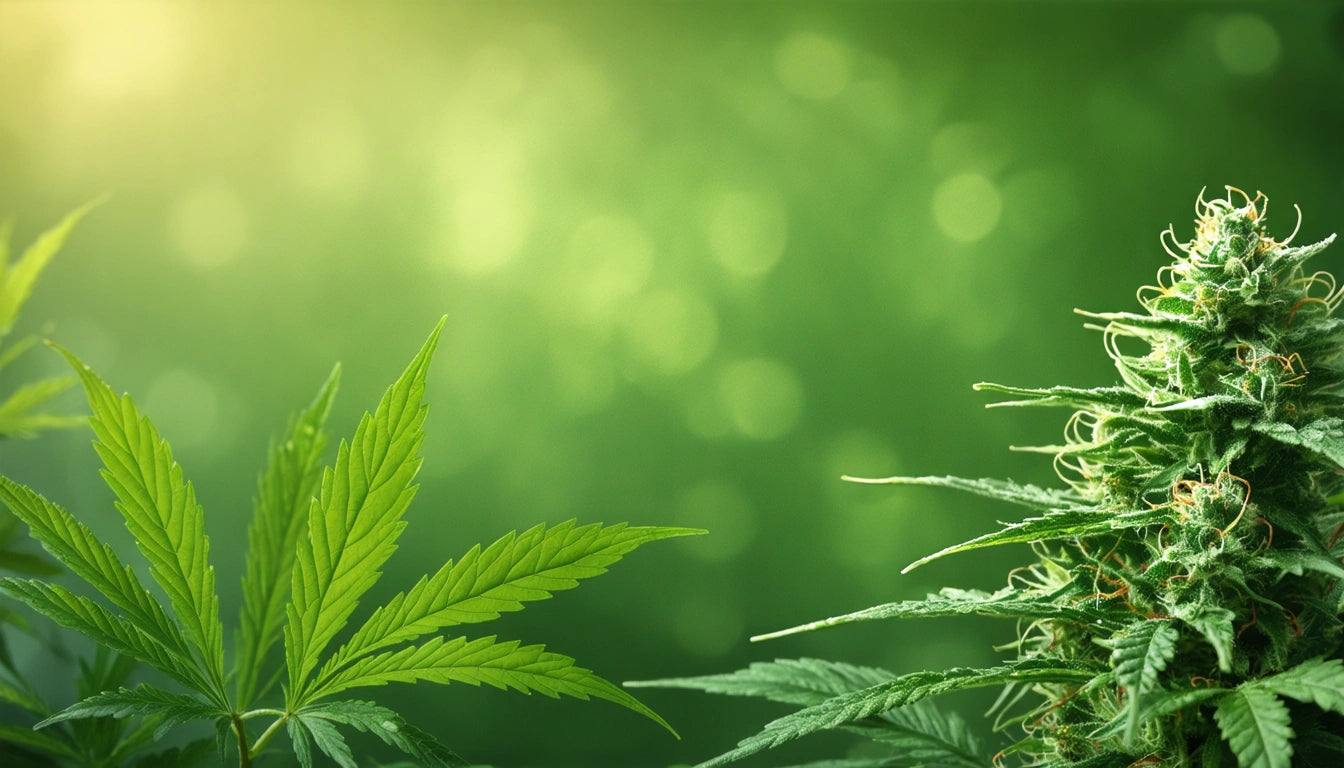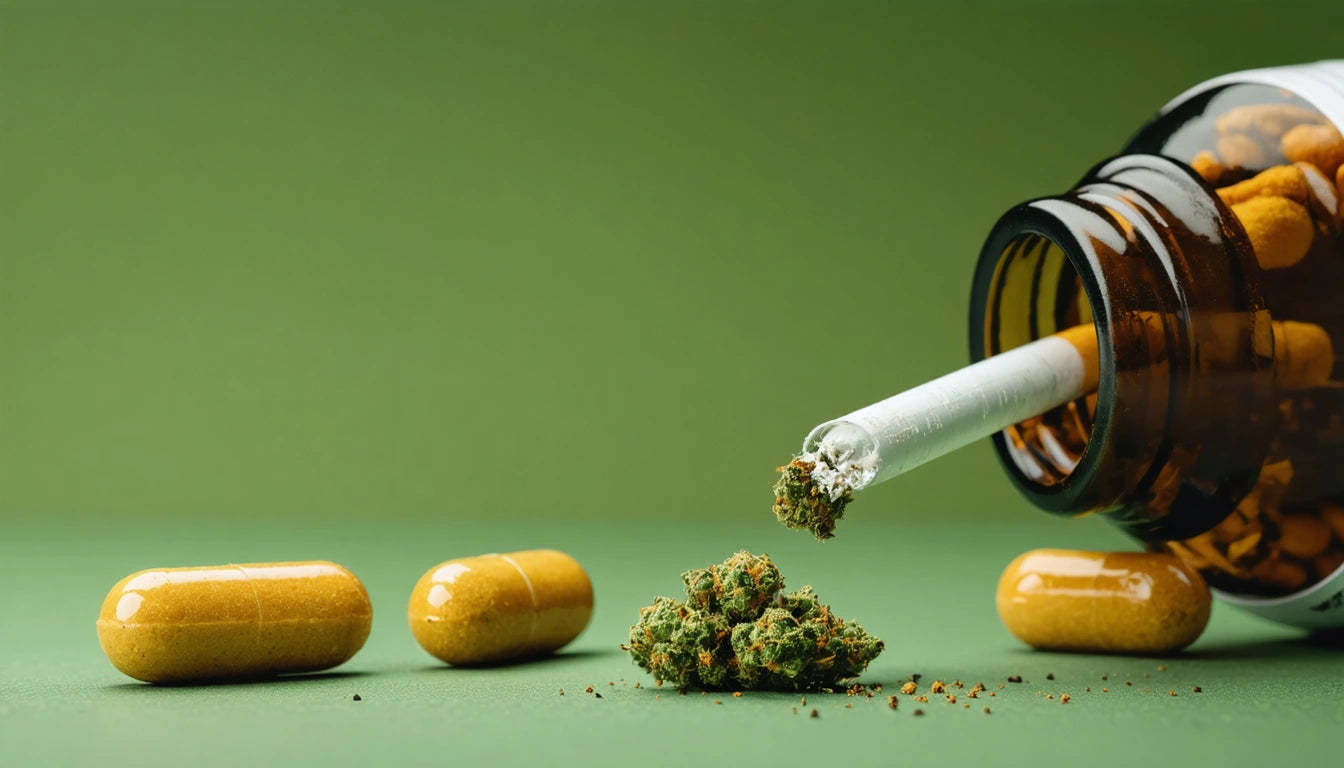Table of Contents
Managing Fan Leaves During the Flowering Stage: Tips and Techniques for Healthy Cannabis Plants
The flowering stage represents a critical period in cannabis cultivation when proper management of fan leaves can significantly impact yield and quality. Growers often debate when and how to remove fan leaves during flowering to optimize light penetration, airflow, and nutrient allocation. This guide explores best practices for fan leaf management to help cultivators make informed decisions throughout this crucial growth phase.
Understanding Fan Leaves: Their Role in Cannabis Growth
Fan leaves, also known as sun leaves, are the large, multi-fingered leaves that extend from the main stem and branches of cannabis plants. These leaves serve as the plant's primary photosynthetic organs, converting light into energy for growth and bud development.
What Are Fan Leaves on a Weed Plant?
Fan leaves are distinguished by their size and typically contain five to nine pointed leaflets arranged in a fan-like pattern. As explained in this guide to weed leaf characteristics, these leaves differ from sugar leaves, which are smaller and grow directly on or near the buds.
While fan leaves don't contain significant amounts of cannabinoids, they're vital for:
- Photosynthesis and energy production
- Transpiration and water regulation
- Nutrient storage and distribution
- Protection of developing flowers
When to Remove Fan Leaves During Flowering
The question of when to trim fan leaves during flowering depends on several factors, including plant health, growth stage, and cultivation goals.
Early Flowering (Weeks 1-3)
During early flowering, minimal defoliation is recommended. Remove only:
- Severely damaged or diseased leaves
- Leaves that receive no light and show signs of yellowing
- Leaves blocking airflow to the center of the plant
As noted in this guide on transitioning to flowering, plants need their photosynthetic capacity during this period to support the energy demands of initial bud formation.
Mid-Flowering (Weeks 3-6)
This is typically the optimal period for strategic defoliation. Consider removing:
- Lower fan leaves receiving minimal light
- Leaves shading developing bud sites
- Overlapping leaves that create humid microclimates
Late Flowering (Weeks 6+)
During late flowering, be increasingly conservative with leaf removal. The plant's energy is focused on bud development, and excessive defoliation can stress the plant and reduce yields. For proper storage of your harvested buds, quality storage solutions like mylar bags can help preserve potency and freshness after all your careful cultivation work.
Proper Trimming Techniques for Healthy Plants
How you trim fan leaves is just as important as when you trim them. Proper technique minimizes stress and prevents disease.
Tools and Preparation
- Use clean, sharp scissors or pruning shears
- Sanitize tools with alcohol before and between plants
- Work in a clean environment to prevent contamination
How to Trim Fan Leaves During Flowering
Follow these steps for effective defoliation:
- Identify target leaves based on position and condition
- Cut at the base of the leaf stem (petiole) close to the main stem
- Make clean cuts to minimize damage to surrounding tissue
- Limit removal to 20-25% of total fan leaves in a single session
- Allow 5-7 days between major defoliation sessions
Treating Brown Spots on Fan Leaves
Brown spots on fan leaves during flowering often indicate nutrient deficiencies, pH imbalances, or pest issues that require prompt attention.
Common Causes of Brown Spots
- Calcium deficiency (brown spots with yellow halos)
- Magnesium deficiency (interveinal chlorosis leading to brown spots)
- Phosphorus excess (dark green leaves with brown spots)
- Fungal infections (powdery mildew, leaf septoria)
- Pest damage (spider mites, thrips)
How to Treat Brown Spots on Fan Leaves During Flowering
To address this issue effectively:
- Identify the specific cause through careful observation
- Adjust nutrient solutions if deficiencies are suspected
- Check and correct pH levels in soil or growing medium
- Apply appropriate organic treatments for pests or fungi
- Improve airflow and reduce humidity to prevent spread
- Remove severely affected leaves to prevent further contamination
For more information on plant health during the critical flowering period, consult this resource on flowering stage timelines.
Special Considerations for Outdoor Plants
Outdoor cannabis cultivation presents unique challenges for fan leaf management due to environmental factors.
When to Remove Fan Leaves During Flowering Outdoor
Outdoor defoliation should be more conservative than indoor approaches:
- Time defoliation with weather patterns, avoiding periods before rain
- Consider seasonal light changes when deciding on defoliation timing
- Be more selective with leaf removal, focusing on damaged leaves
- Create gradual openings in the canopy to prevent sunburn on previously shaded buds
- Monitor for pests more vigilantly after defoliation, as exposed areas may attract insects
Outdoor plants generally benefit from their fan leaves as protection against environmental stressors. As discussed in this guide on cannabis flowering outdoors, natural light cycles and weather patterns significantly influence plant development.
Maximizing Harvest Quality Through Strategic Leaf Management
The relationship between fan leaves and bud development is complex. While excessive foliage can limit light penetration and airflow, the question "will buds grow without fan leaves" has a clear answer: buds need some fan leaves to develop properly.
Strategic defoliation throughout flowering can significantly impact harvest quality by:
- Improving light distribution to lower bud sites
- Reducing humidity around developing flowers
- Minimizing the risk of mold and mildew
- Directing plant energy toward bud production
- Creating a more manageable plant structure for maintenance
For growers looking to repurpose trimmed leaves, creative uses for cannabis leaves can help minimize waste from your cultivation efforts.
By balancing the need for photosynthetic surface area with optimal light penetration, cultivators can develop an effective fan leaf management strategy that enhances both yield and quality. Remember that each plant and growing environment is unique, requiring observation and adaptation of these principles to your specific circumstances.











Leave a comment
All comments are moderated before being published.
This site is protected by hCaptcha and the hCaptcha Privacy Policy and Terms of Service apply.